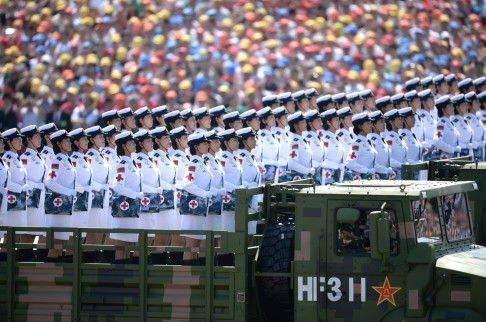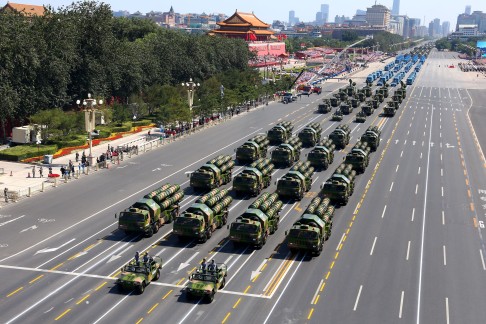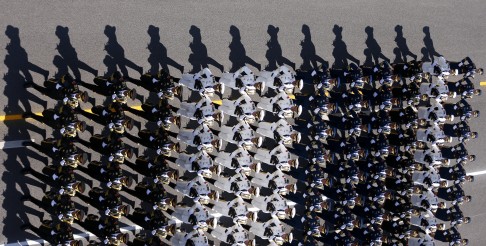
Did goose-stepping troops make a turkey of China's Victory Day parade? Study says rigid formations diminish sense of military might

Using large groupings of personnel in a military parade to emphasise the size of a country’s armed forces could be counter-intuitive and leave viewers distinctly underwhelmed due to the way our sensory perception works, a new study shows.
Beijing held a mass military parade in Tiananmen Square on September 3 to celebrate the 70th anniversary of the end of world war two in Asia, also hailed as a victory over Japanese aggression.
As with similar parades held in North Korea or Russia, its reliance on rigid formations arranged in rows and columns could have lead viewers to underestimate the true number of personnel and equipment on display, the study suggested. It posed the philosophical question "What is a number?"
China used the occasion to show off some of its new technology as well as its military might by grouping large numbers of personnel into goose-stepping squadrons. It also arranged tanks, rocket launchers and other military hardware in intimidating but orderly grids.
But this may have been a miscalculationmiscal, according to a new study led by researchers at the Chinese Academy of Sciences’ Institute of Biophysics.
Their paper shedding light on the subject has just been published in the journal Proceedings of the National Academy of Sciences in the United States of America.
The researchers conducted tests at the State Key laboratory of Brain and Cognitive Science, in Beijing, to measure the impact of space distortion on how people use physical information to calculate numbers.
Over 100 volunteers were briefly shown pairs of cards and then asked which one contained more dots. The results were reasonable - unless the dots on one of the cards were arranged in a line, or grouped in circles.
In this event, the volunteers were more likely to underestimate their true number.
To dig deeper, the researchers scanned the volunteers’ brains and found that the areas responsible for counting were less active when the numbers came up in these visual formations.
“This is an interesting study with practical value,” said one social psychologist, who declined to be named.
“The military parade [in Beijing] consumed many resources and required that many people be mobilised, partly because the organisers wanted the biggest visual impact,” the person added.
“In future, they should consider allowing ordinary citizens to join in, as this would better please the eyes and hearts of the (Chinese) people.”
Chinese authorities said that 12,000 soldiers participated in the September 3 show, making it the largest of its kind in China in over a decade.
Yet many viewers were not impressed.
“It’s hard to tell how many soldiers passed in front of my eyes,” said a photographer who was on the scene. “My impression is: not many.”
He said the contrast with China’s National Day parade back In 1984 was significant.
“After all the marching soldiers, there came university students and ordinary citizens. It was a happy mess, more like a carnival,” he added.
“You could feel that the entire nation was there.”

